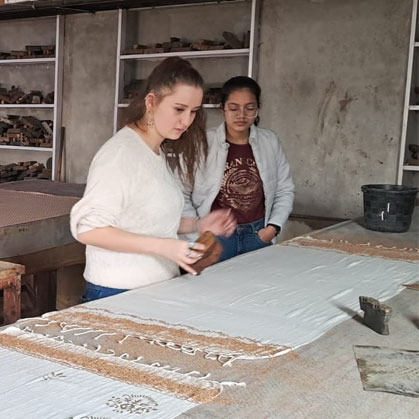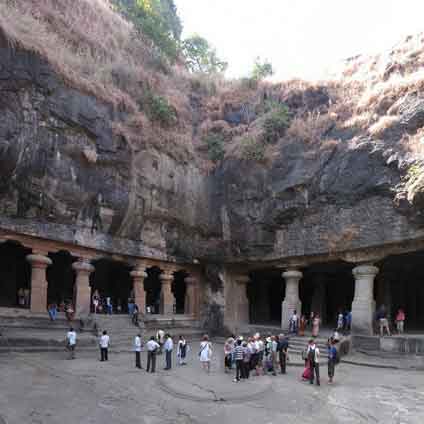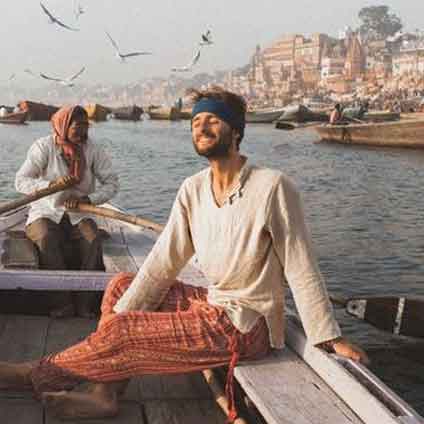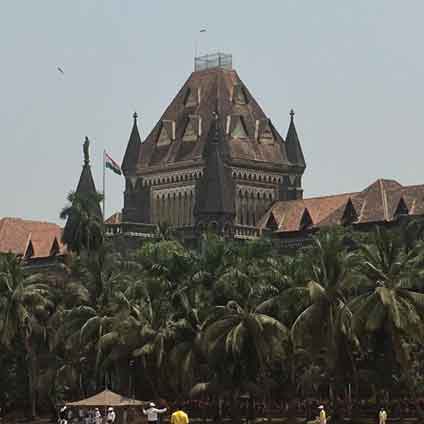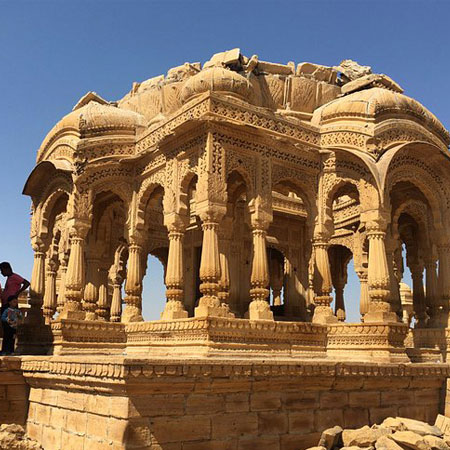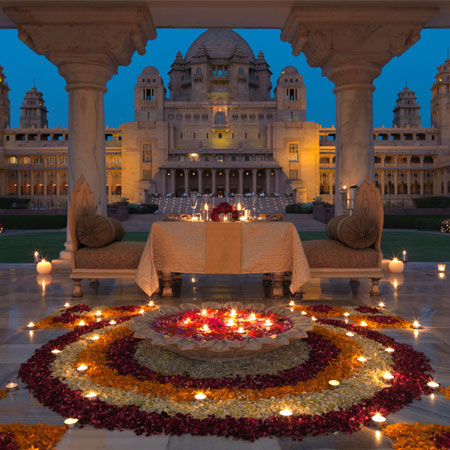As an art lover and a traveler, I have always been fascinated by the beauty of traditional crafts and textiles. One such art form that has caught my attention is Bagru block printing, a traditional printing technique from the small town of Bagru in Jaipur, India. The intricate patterns and vivid colors of Bagru block prints have a charm that is unmatched by any other form of printing. I had the opportunity to attend a Bagru block printing workshop during my visit to Jaipur, and it was a truly enlightening experience.
Introduction to Bagru Block Printing
Bagru block printing is a traditional printing technique that is believed to have originated in the small town of Bagru, located on the outskirts of Jaipur, in the 17th century. It involves using hand-carved wooden blocks to print intricate designs onto fabric. The blocks are dipped in natural dyes and then stamped onto the fabric, creating a beautiful pattern. The process is repeated until the entire fabric is covered with the desired design.
History of Bagru Block Printing
The history of Bagru block printing can be traced back to the 17th century when it was first introduced in Bagru. The printing technique was initially used to print designs onto cotton fabric, which was then used to make turbans for men. As the popularity of Bagru block printing grew, it began to be used to print designs onto a variety of fabrics, including silk and chiffon.
The popularity of Bagru block printing declined in the 20th century with the advent of machine-made textiles. However, in recent years, there has been a revival of interest in traditional crafts, and Bagru block printing has once again become popular.
The Process of Bagru Block Printing
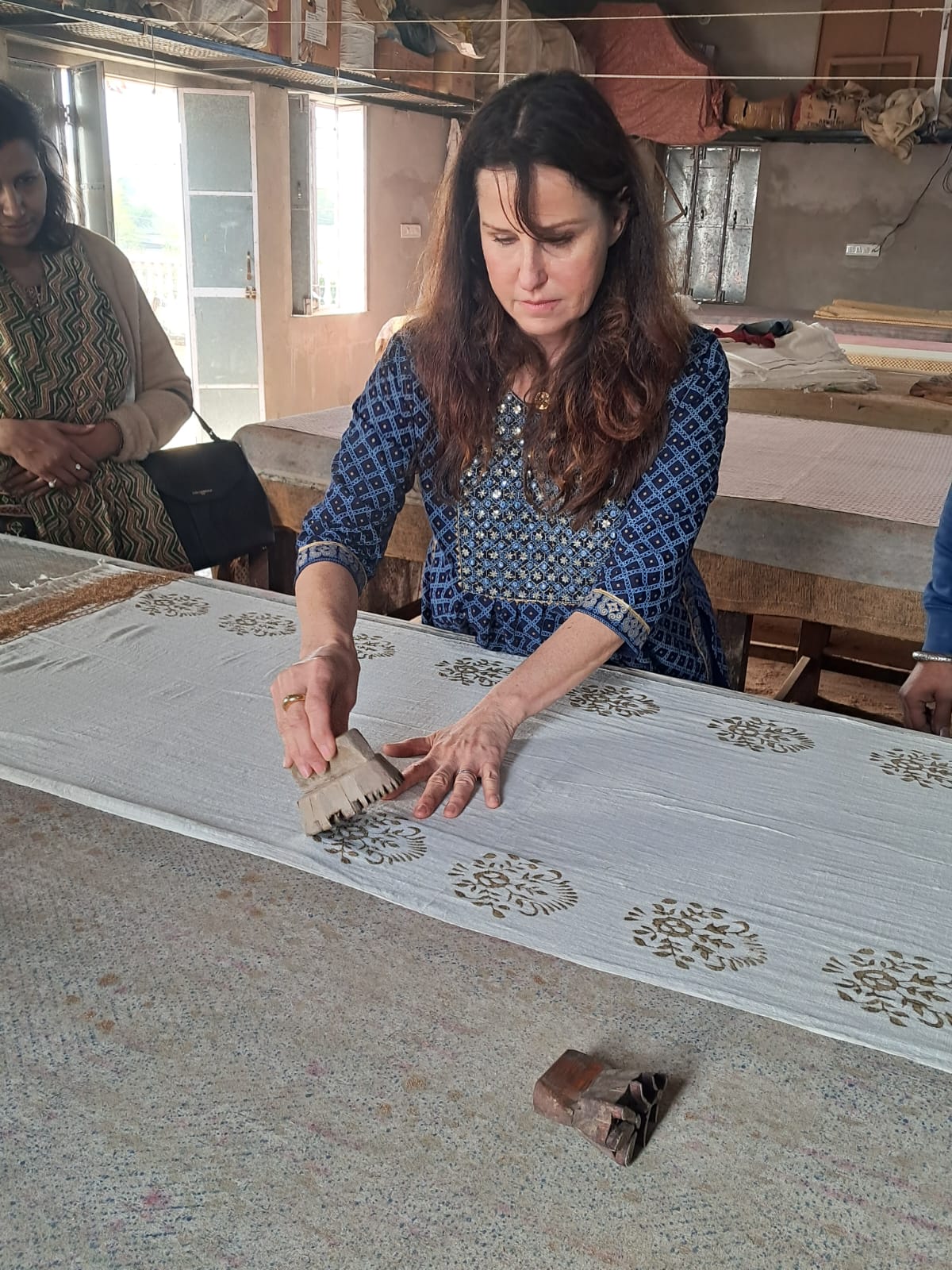 The process of Bagru block printing is a time-consuming and intricate process that requires a lot of skill and patience. The first step in the process is to prepare the fabric by washing it and soaking it in a mixture of water and harda powder. Harda is a natural dye that acts as a mordant and helps to fix the color of the final print.
The process of Bagru block printing is a time-consuming and intricate process that requires a lot of skill and patience. The first step in the process is to prepare the fabric by washing it and soaking it in a mixture of water and harda powder. Harda is a natural dye that acts as a mordant and helps to fix the color of the final print.
Once the fabric is ready, the design is drawn onto the wooden block. The block is then carved by hand, using chisels and hammers. The design is carved in reverse, so that when the block is stamped onto the fabric, the design appears the right way round.
The next step is to prepare the natural dyes. Bagru block printing uses a range of natural dyes, including indigo, madder, and turmeric. The dyes are mixed with water and then poured into trays.
The block is then dipped into the dye and stamped onto the fabric. The process is repeated until the entire fabric is covered with the desired design. The fabric is then washed to remove any excess dye and left to dry.
The Importance of Natural Dyes in Bagru Block Printing
One of the unique features of Bagru block printing is the use of natural dyes. Natural dyes are derived from plants, and they are safer and more environmentally friendly than synthetic dyes. They also produce a range of beautiful colors that are not possible with synthetic dyes.
The use of natural dyes in Bagru block printing is an important part of the craft. The natural dyes are carefully prepared and mixed to produce the desired color. The dyes are also used to create different effects, such as resist dyeing and tie-dyeing.
The Significance of Bagru Block Printing in Jaipur
Bagru block printing is an important part of the cultural heritage of Jaipur. The craft has been passed down from generation to generation, and it is an integral part of the local economy. Many families in Bagru are involved in the craft, from the block carvers to the dyers and printers.
The popularity of Bagru block printing has also had a positive impact on the local economy. Many small businesses have sprung up around the craft, selling a range of products, including clothing, home furnishings, and accessories.
Bagru Block Printing Workshop Experience
Attending a Bagru block printing workshop was a highlight of my trip to Jaipur. The workshop was held in a small studio in Bagru, and it was run by a local craftsman who had been practicing the craft for over 30 years.
The workshop began with an introduction to the history and process of Bagru block printing. We were then shown how to prepare the fabric and mix the natural dyes. We were each given a wooden block and shown how to stamp the block onto the fabric to create a beautiful design.
The workshop was a hands-on experience, and we were encouraged to experiment with different colors and designs. It was amazing to see the intricate patterns come to life as we stamped the blocks onto the fabric.
Learning the Art of Bagru Block Printing
Learning the art of Bagru block printing is a rewarding experience. It requires patience, skill, and an eye for detail. Attending a workshop is a great way to learn the craft, as you get to work alongside experienced craftspeople who can guide you through the process.
If you are interested in learning the art of Bagru block printing, there are many workshops available in Jaipur. Some workshops are run by individual craftspeople, while others are run by larger organizations.
The Future of Bagru Block Printing
The future of Bagru block printing looks bright. The craft has seen a resurgence in popularity in recent years, and there is a growing demand for handmade, sustainable products. Many designers and brands are incorporating Bagru block prints into their collections, which is helping to raise awareness of the craft.
However, there are also challenges facing the craft. The use of synthetic dyes and the rise of fast fashion pose a threat to traditional crafts like Bagru block printing. It is important that we continue to support traditional crafts and promote sustainable, handmade products.
Where to Find Bagru Block Printed Products in Jaipur
If you are looking to buy Bagru block printed products in Jaipur, there are many places to choose from. The markets in Jaipur are filled with a range of products, including clothing, home furnishings, and accessories.
One of the best places to buy Bagru block printed products is the Anokhi Museum of Hand Printing. The museum has a collection of traditional textiles and clothing, as well as a shop selling a range of products made using traditional printing techniques.
Conclusion
Bagru block printing is a beautiful and intricate craft that is an important part of the cultural heritage of Jaipur. Attending a Bagru block printing workshop is a great way to learn the craft and gain an appreciation for the skill and patience required to create these beautiful prints.
As travelers and consumers, it is important that we support traditional crafts like Bagru block printing. By buying handmade, sustainable products, we can help to promote traditional crafts and support local communities.
So, if you are ever in Jaipur, be sure to visit Bagru and attend a workshop to discover the art of Bagru block printing for yourself. Or do let us know we can arrange the workshop. You can write us or mail: 0091+9818885102 | info@castleandking.com

 Menu
Menu


